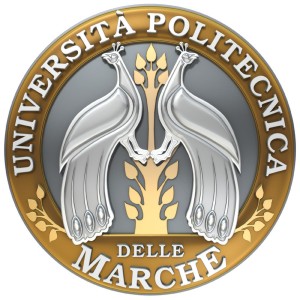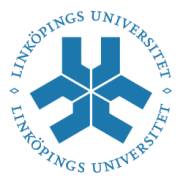Center for National scientific Research – Laboratory for Architecture and Analysis of Systems (CNRS-LAAS), France

CNRS-LAAS is part of the National French science center and is situated in Toulouse France. CNRS-LAAS has a long tradition in microelectornics and nanotechnology for RF and communication electronics from the level of devices and MEMS to the level of systems.CNRS-LAAS has initiated research in the field of RF MEMS since 1995 and in the field of MEMS based sensor since 1990. It has developed technological processes allowing the fabrication of interconnects, filters, antennas up to 100 GHz range through the use of both bulk, surface micromachining techniques and BCB technologies. The laboratory is involved in numerous IST projects (ARTEMIS where the objectives are to develop a micromachining technology compatible with SiGe technology to improve the performance of the passive in the 24 Ghz range and MARTINA project where it is considered the investigation of the potential of FBAR technology for advanced RF front end. CNRS-LAAS has been involved in the ARRRO project that aims at establishing a roadmap concerning the RF Microsystems. Note that LAAS has also a large expertise in the field of Electromagnetic simulation. Concerning the carbon based devices, CNRSLAAS is currently working on the design, fabrication and characterization of graphene and CNT based devices for RF applications. CNRS-LAAS has acquired expertise in the field of multiphysic and multiscale modeling through the use of commercial platforms (HFSS-Ephysic, Comsol, CoventorWare) and through the development of homemade solutions. Finally, LAAS is working on the reliability of RF MEMS with a special emphasis concerning the physical origin of the degradation mechanisms and the prediction of the reliability at the design phase. LAAS has been the coordinator of the European Network of excellence on RF-MEMS and RFMicrosystems AMICOM (FP6-IST-3). CNRS-LAAS has been actively working in novel carbon related devices for RF applications for the past years.
Role in NANO-RF:
LAAS will participate in work packages related to specifications, design, fabrication and characterization work for graphene related devices and sub-modules. LAAS will lead WP4 (Characterization) and fabricate at the submodule level all graphene related devices. Finally LAAS will assist In the characterization of graphene based devices for the consortium.
Laboratory Resources:
LAAS is a laboratory belonging to CNRS (www.laas.fr) involving four departments (Robotic, Automatic, Computer Science and Micro and NanoSystems). It involves around 500 Searchers. The Micro and Nanosystem department has technological facilities for processing III-V and Silicon based Microsystems), characterization facilities from DC, up to the field of microwave and millimetre wave including exhaustive noise measurements capabilities and to the optic field. With a fully equipped clean room covering more than 1500 m², LAAS has an active and diverse nano and micro-technology fabrication infrastructure, specializing on nano technology for RF applications and novel carbon based devices. At the same time, the entire clean room facility is 6” compatible enabling process optimization which can be directly transferred to pre-production state. On the level of characterization, LAAS has a full range of high frequency (up to 110GHz) characterization platform with extensive experience in RF subsystems and modules as well as basic devices. At the same time, characterization at the structural level through AFM, SEM and several other characterization techniques. Finally, the activity of modelling and simulation in the RF range is well developed and equipped with simulation software in order to systematically connect device design, fabrication and modelling.
Key personnel:
Prof. Robert Plana was born on March 1964 In Toulouse. He obtained its PhD in 1993 at LAAS-CNRS and Paul Sabatier University on the Noise modelling and characterization of Advanced Microwave devices (HEMT, PHEMT and HBT) that includes the reliability. In 1993, as associate professor at LAAS-CNRS, he has started a new research area concerning the investigation of millimeterwave capabilities of Silicon based technologies. More precisely, he has focussed on the microwave and millimeterwave properties of SiGe devices and their capabilities for low noise circuits. In 1995, he has started a new project concerning the improvement of the passives on silicon through the use of MEMS technologies. In 1999, he has been involved with SiGe Semiconductor in Ottawa where he was working on the low power and low noise integrated circuits for RF applications. In the same year, he has received a special award from CNRS for his works on Silicon based technologies for millimeterwave communications. In 2000, he has been professor at Paul Sabatier University and Institut Universitaire de France and he has started a research team at LAAS-CNRS in the field of Micro and Nanosystem for RF and millimeterwave communications. Its main interests are on the technology, design, modelling, test, characterization and reliability of RF MEMS for low noise and high power millimeterwave applications and the development of the MEMS IC concept for smart microsystem. He has built a network of excellence in Europe in this field “AMICOM” regrouping 25 research groups. He has authored and co-authored more than 200 international journals and conferences. In 2004, he has been appointed as Deputy Director of the Information and Communication Department at the CNRS Headquarter. From January 2005 to January 2006, he has been appointed director of the Information and Communication Department at CNRS. He is now heading a research group at LAAS-CNRS in the field of Micro and Nanosystem for wireless communications
Dr.George Deligeorgis earned his PhD in 2008 working on GaAs based Semiconductor laser diodes for telecommunication applications. He has worked on numerous projects in design and fabrication of compound semiconductor devices in the field of photonics and high frequency electronics (MMIC) for the last decade. He was involved in numerous National and European funded projects in the fields of photonics, RF device fabrication and novel devices such as polaritonic devices. Following his PhD, he stayed in FORTH (Foundation for Research and Technology), Greece as a Post-Doctoral Research Associate working on device design and fabrication. Since 2008, graphene devices became his principal research interest. Since 2010, he moved to LAAS-CNRS (Laboratory for analysis and architecture of Systems, National Center of Scientific Research), in France where he continues his activity in the same subject. He currently works on nonlinear graphene based RF devices, polariton optoelectronics and memristive devices combining his knowledge in physics and nanotechnology. He has published numerous articles in journals and has several invited and contributed talks. Finally, Dr.Deligeorgis is a founding member of the “Graphene Center, Greece” and is a reviewer in several international journals.





